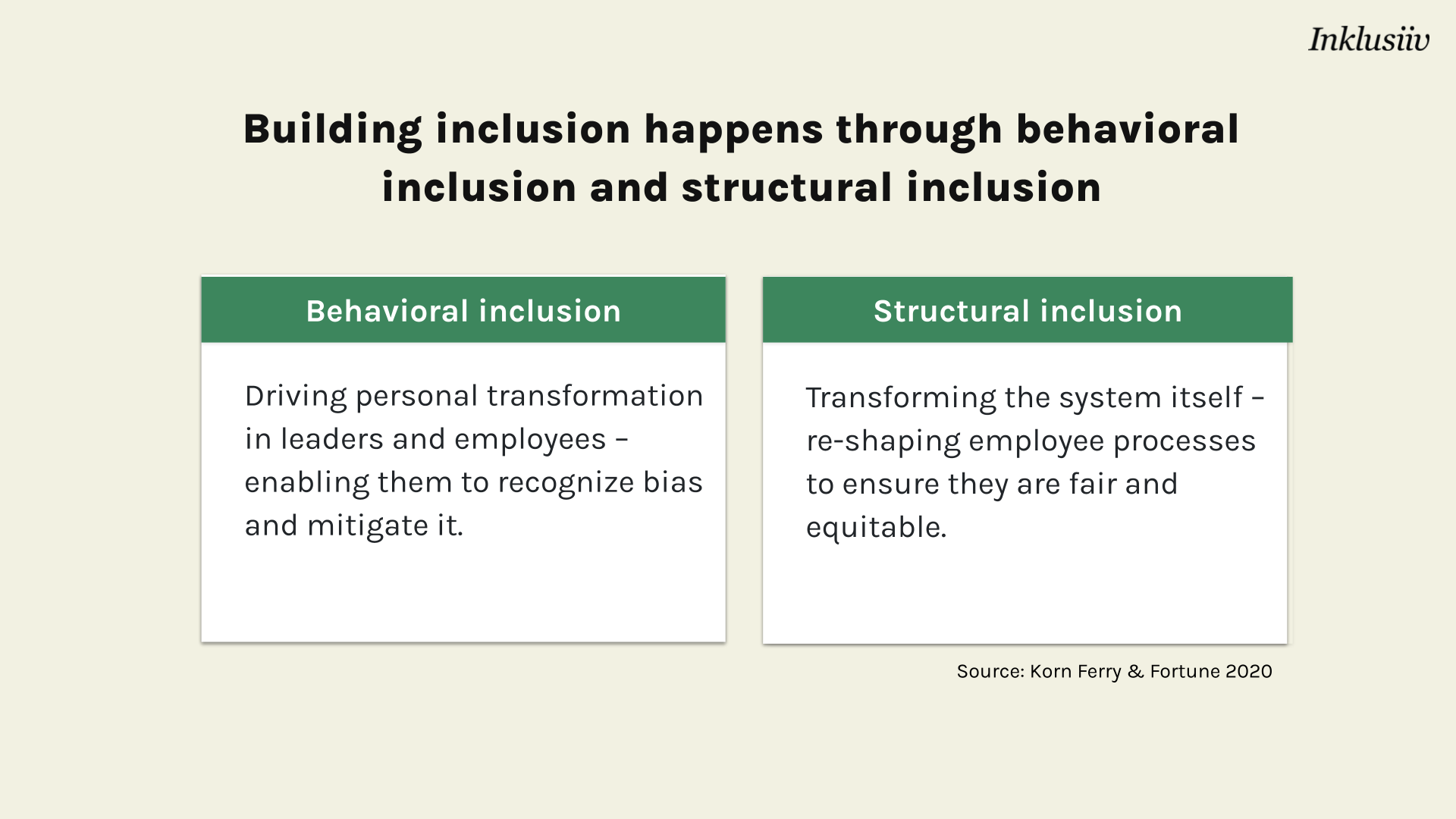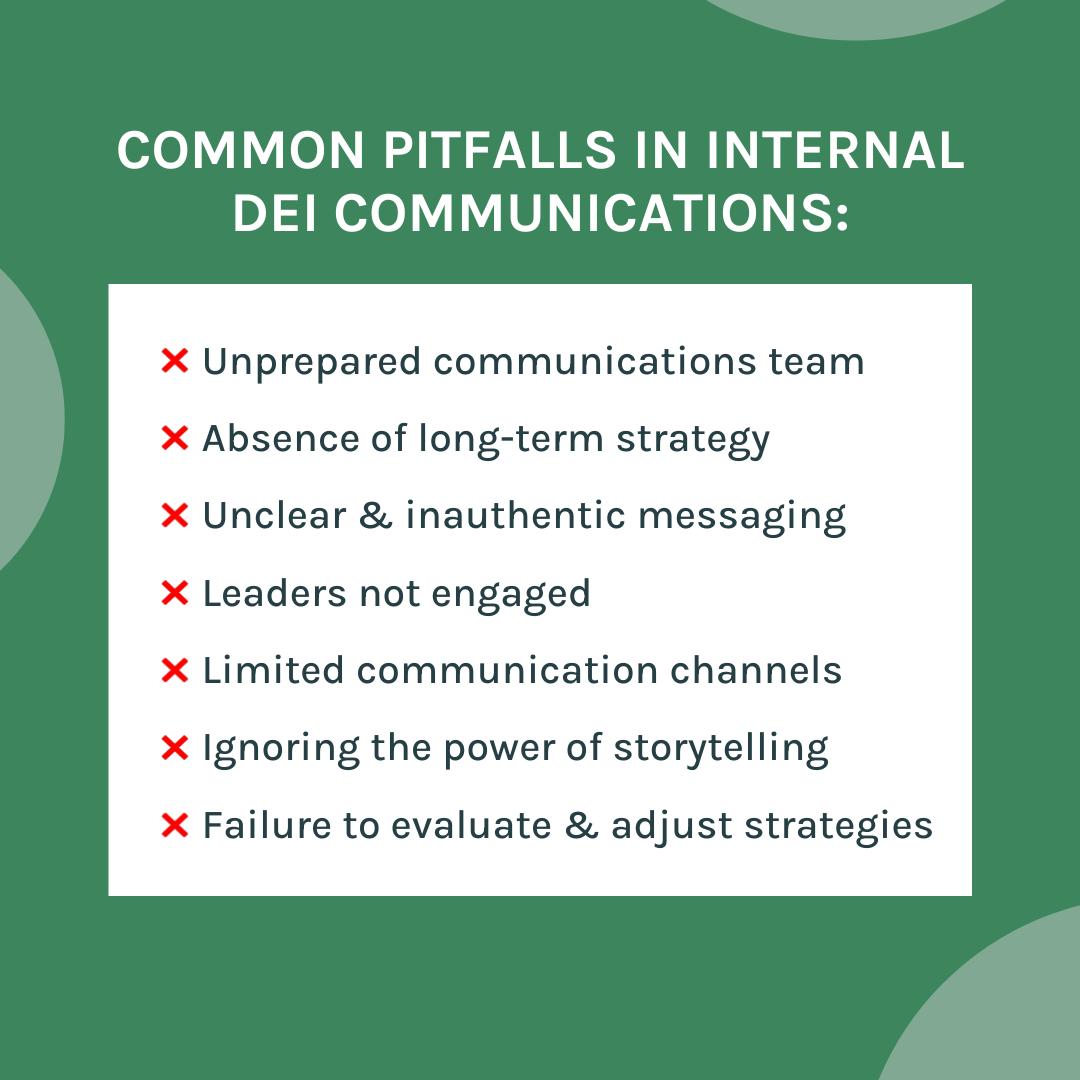When we talk about advancing DEI in our organizations, what we ultimately mean is that we have identified a need for change. Be it change on a big or small scale, we recognise the need to do some things differently to ensure that people from all backgrounds feel welcome, heard and included in our place of work.
At the core of successful DEI work is achieving change at both the structural and the behavioural levels. We need to ensure inclusion is realised in our organizational processes and practices, and in the way we behave in interpersonal interactions.

Ultimately, organizations don’t change – people do. This is true for all change, but especially so when we talk about inclusion. To achieve our desired DEI outcomes, we need to get our leaders and employees to change the way they behave and carry out their roles and responsibilities – we need to motivate and support each individual to engage with DEI change.
Achieving successful organizational change is hard, especially when faced with the task of transforming deeply ingrained cultural norms and established ways of working. Luckily, there is a wealth of existing research that provides valuable guidance on effectively managing organizational change, including the critical role of internal communications in driving and supporting successful transformations.
Effective internal communication is crucial to ensuring DEI success
One of the key components of any organizational change is effective internal communications. By communicating why changes are needed and how the changes will affect employees’ day-to-day experiences, we can build engagement with DEI across the whole organization. It is essential to provide a comprehensive explanation of what DEI entails and why it is vital for the organization before expecting employees to actively participate in the conversation.
For a change to be successful, the driving forces of the change must outweigh the resistance encountered (Lewin, 1951). Well-planned internal communications not only propel change forward but also help mitigate potential resistance. If the DEI agenda is not explained well, or there is a lack of shared understanding among employees of what DEI work really is and why it is important, it is highly likely that many employees will feel apathetic to the topic, or even actively push back or object to it.
So what are the key things to bear in mind when planning internal communications to support DEI change? Here are our top tips to help you get started on the right track.
7 Key Considerations for Building Impactful Communications about DEI
1. Equip your communications team with the tools and knowledge to succeed
Internal communications teams are important change agents and play a key part in advancing organizational DEI. However, DEI topics might not yet be familiar to everyone working in internal communications, so it is important to offer professional development support where needed, for example in the form of DEI training tailored for communications professionals. These sessions can also address navigating sensitive topics, addressing challenges, and overcoming resistance to DEI.
2. Take the time to plan a long-term communications strategy for DEI awareness building
Like with any communications campaign, it’s worth taking the time to properly plan how you will communicate about DEI in your organization – especially if this is a new topic for your team. There are likely to be differing levels of prior knowledge about DEI among your leaders and employees, and it’s important to plan your communications carefully to meet differing needs. DEI topics can be embedded into ongoing communications plans, but make sure to give them enough time and attention alongside competing priorities.
3. Develop a clear and compelling message
Focus on ensuring everyone in the organization understands what DEI is, and why it is important. Craft a concise and easily understandable message that outlines why DEI is a priority for your organization and how it connects to your organisation’s values. Communicate the desired outcomes of your DEI agenda, and the benefits these changes will bring for individuals as well as the organization at large. And importantly, remember to communicate what is already being done on a practical level to advance DEI in the organization to keep everyone informed on the progress.
4. Involve your leaders in communicating your key messages
Senior leaders have a key role in communicating the organization’s DEI commitment. Change management research conducted by ProSci has demonstrated that employees value hearing directly from senior leaders about the organization’s commitment to advancing DEI. Empower leaders at all levels to articulate the “why” behind DEI initiatives and inspire others to participate. Similarly encourage leaders to communicate the individual expectations and responsibilities related to DEI, fostering a sense of clear ownership and accountability. Consider offering specialized training or coaching to equip leaders with the necessary skills and knowledge to effectively fulfil this crucial role.
5. Repeat the message and use multiple channels and modes of communication
Communicating about any change is a process, not an event. People need to hear the same message repeatedly, and preferably in different contexts and through different channels to maximise impact. Regular updates about progress, changes, milestones, and both small and big wins in advancing DEI help to maintain momentum and reinforce commitment. Share messages more often than you think necessary.
Remember to apply inclusive communications principles. Utilise inclusive language, employ multiple channels, and recognize diverse information processing styles. Foster two-way communication, encouraging feedback, questions, and open dialogue to create an environment where employees can actively participate. By incorporating these inclusive practices, you can ensure that your communications are accessible, relatable, and resonate with a diverse audience within your organization.
6. Invite team members to share their stories
A powerful tool in any communication team’s toolbox is storytelling. Sharing colleagues’ personal stories or experiences can raise awareness about diversity in the team, and real life examples can improve understanding of and motivation for DEI across the whole organization. Consider sharing stories such as a male colleague’s experiences of taking parental leave, a Muslim colleague’s celebration of Ramadan, or providing a platform for a colleague with a disability to share about the tools they use to assist them at work. Make sure the stories are honest and you are sharing them for the right reasons: to raise awareness and understanding, not for the purposes of making your organization look good.
7. Regularly evaluate and adjust communication strategies
Over the course of actioning your communications plan, make sure to monitor what kind of DEI content and messages people are engaging with. Which messages are building most engagement, and what might need further emphasising or clarifying? Are you sensing resistance? If so, consider repeating key messages or exploring alternative approaches. Tap into two-way communication to seek employee feedback on what is resonating. If something isn’t working, find out why, and iterate the communication strategy accordingly.

Communicating about DEI is a process, not an event
A well-planned communications programme is key to a holistic and impactful DEI agenda. Internal communications about DEI supports building buy-in from across the whole organization, and supports the success of all other DEI efforts, such as surveys, training programmes, coaching, or employee resource groups.
Remember that communications alone is not enough – your employees will want to see tangible results and activity to promote DEI. Combined with a well planned DEI roadmap or action plan, communications will make all the difference in achieving broad engagement and creating sustainable DEI change.
Find out more about Inklusiiv’s services here! If you need help in planning your DEI communications or action plan, please get in touch with us at consulting@inklusiiv.com.

